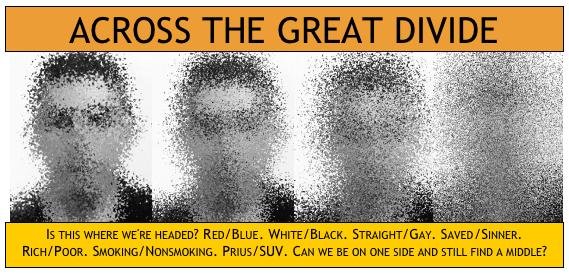Casualties of War
To my friend the cardiologist, the words had far more graphic meaning than they can have here. We see "hip disarticulation." He sees a young man whose leg is removed right up to the hip joint. We read "exsanguinate." He sees a field surgeon desperately racing to save a soldier who is bleeding to death through many seemingly insignificant wounds. We stumble over "coagulopathic." The cardiologist knows all about circulation gone haywire—where a clot saves the victim one day and kills him the next.
The War's death toll is bad enough. But what about the wounded?
We read news reports about Operation Iraqi Freedom and regret the 1000+ American combat deaths that have resulted so far (plus another 150 deaths from the entire Coalition of the Willing). My friend reads the article in the New England Journal of Medicine—"Casualties of War: Military Care for the Wounded from Iraq and Afghanistan"—and can visualize the many more who have been terribly wounded, yet saved from death by advancing military medical practice.
You can read for yourself at the link below. There's also a photo essay in the same issue. (Just click on the PDF under "This Article" at the right of the page.) But beware: it's very graphic.
In dry, cautious terms, the article points out that the death toll is not an accurate gauge of the war's impact on our soldiers. We've gotten much better at preserving lives on the battlefield. But the human body and mind still suffer from the loss of a kidney, limbs shredded, a face half torn away. Wounds once lethal are now survivable, thanks to modern military medicine.
The article points out how the lethality of war wounds has dropped dramatically since even the Gulf War. In World War II, 3 out of 10 wounded in action died. In Vietnam, with a more focused front and improved medical evacuation, 24% of the wounded died. Since 2000, the lethality rate has dropped to 10%.
If we look only at death figures, it's possible to imagine today's battlefield is safer place for our troops. That we're protecting them better or keeping them out of harm's way, with smart weapons and Predator drones to do the dirty work. The truth is, this is not a kinder, gentler war. We may simply be returning more crippled, disfigured and traumatized young men and women to our country.
Whether we're in favor of or opposition to what's gotten us there, let's not overlook their continuing sacrifice.
The War's death toll is bad enough. But what about the wounded?
We read news reports about Operation Iraqi Freedom and regret the 1000+ American combat deaths that have resulted so far (plus another 150 deaths from the entire Coalition of the Willing). My friend reads the article in the New England Journal of Medicine—"Casualties of War: Military Care for the Wounded from Iraq and Afghanistan"—and can visualize the many more who have been terribly wounded, yet saved from death by advancing military medical practice.
You can read for yourself at the link below. There's also a photo essay in the same issue. (Just click on the PDF under "This Article" at the right of the page.) But beware: it's very graphic.
In dry, cautious terms, the article points out that the death toll is not an accurate gauge of the war's impact on our soldiers. We've gotten much better at preserving lives on the battlefield. But the human body and mind still suffer from the loss of a kidney, limbs shredded, a face half torn away. Wounds once lethal are now survivable, thanks to modern military medicine.
The article points out how the lethality of war wounds has dropped dramatically since even the Gulf War. In World War II, 3 out of 10 wounded in action died. In Vietnam, with a more focused front and improved medical evacuation, 24% of the wounded died. Since 2000, the lethality rate has dropped to 10%.
If we look only at death figures, it's possible to imagine today's battlefield is safer place for our troops. That we're protecting them better or keeping them out of harm's way, with smart weapons and Predator drones to do the dirty work. The truth is, this is not a kinder, gentler war. We may simply be returning more crippled, disfigured and traumatized young men and women to our country.
Whether we're in favor of or opposition to what's gotten us there, let's not overlook their continuing sacrifice.




0 Comments:
Post a Comment
<< Home